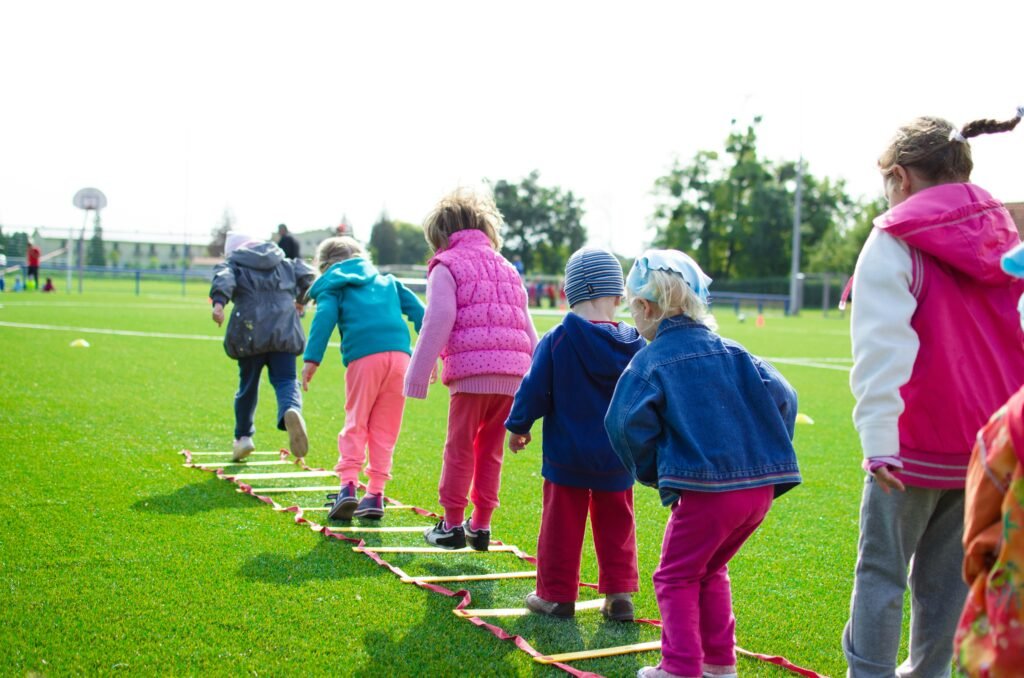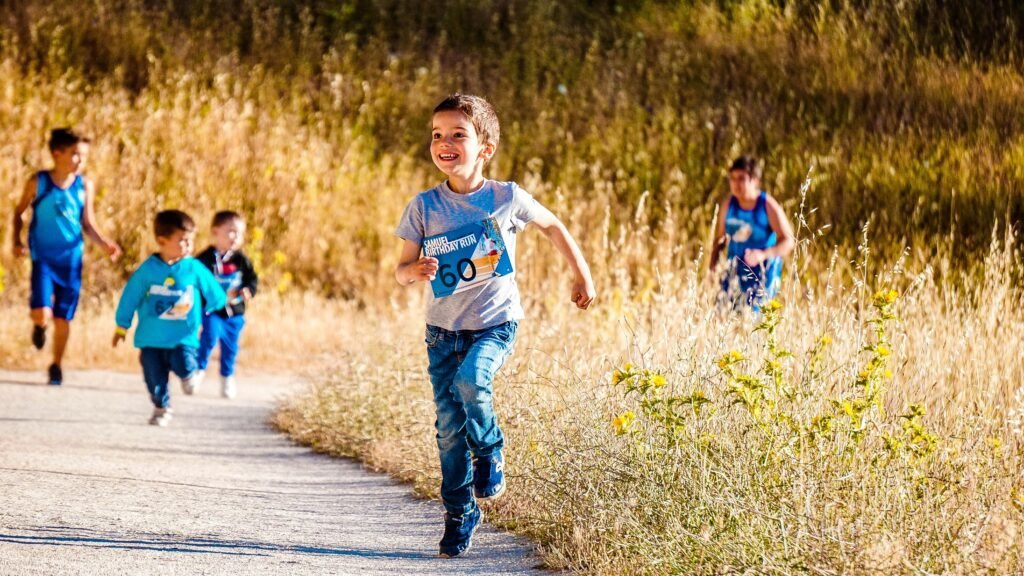Kick the Can

This one’s a twist on hide-and-seek but with a little more action. Kids start with a tin can in the middle of a yard or open space, while one person, “It,” counts as everyone else hides. The goal? To run out and kick the can without getting tagged by “It.” This game gets kids moving and strategizing as they try to free their friends!
Red Rover
A game that might take a little space but packs in tons of fun. Two lines of kids stand opposite each other, holding hands, and call out, “Red Rover, Red Rover, let [name] come over!” The chosen child has to run and try to break through the line. This one teaches teamwork and (gently!) tests strength. Just be prepared for a few enthusiastic pile-ups.
Marbles
Marbles is a game of patience, precision, and maybe a little luck. Draw a circle on the ground, and players take turns trying to knock each other’s marbles out of the ring. It’s a perfect way for kids to get a sense of focus and competition in a low-tech, hands-on way. Plus, marbles can be colorful and collectible, so the fun lasts beyond the game.
Hopscotch
With a little sidewalk chalk, you can create a hopscotch grid in no time. Kids throw a stone to mark their spot, then hop across the numbered squares on one foot. This game’s great for coordination and balance—and it can be customized with different rules or longer grids if kids want a challenge.
Blind Man’s Bluff
One player wears a blindfold and tries to tag the others. The rest of the kids can tiptoe or try to sneak around to avoid getting tagged, making this game perfect for laughter and little bursts of excitement. Just make sure you play it somewhere safe!
Red Light, Green Light
In this game, one person is the “traffic light” and stands at one end of a space while the others stand on the other. When the “traffic light” says, “Green light!” everyone runs forward; when they say, “Red light!” they must stop immediately. If anyone moves during a red light, they have to go back to the starting line. It’s a fun way to practice listening and self-control!
Four Square
A playground classic that’s all about quick reflexes and teamwork. Using a ball and a square marked out in four equal parts, each kid has a “square.” The goal is to hit the ball to another player’s square without them being able to return it. Rules can vary, making it adaptable for kids of all ages.
Sardines
Think of Sardines as reverse hide-and-seek. Only one person hides, while everyone else searches. As kids find the hidden player, they squeeze in beside them until everyone’s hiding together like, well, sardines! The last person to find the group loses, but there’s a lot of laughter along the way.
Freeze Tag

One child starts as “It” and tags others, who then “freeze” in place. They can only be unfrozen if another player crawls under their legs or touches them, keeping the game active and everyone involved. This version of tag keeps the game moving and offers everyone a chance to get in on the action.
Jacks
This one requires a small rubber ball and a set of metal or plastic “jacks.” Kids bounce the ball, then try to scoop up a specific number of jacks before catching the ball again. It’s a game of concentration and coordination that can be played alone or with friends, perfect for rainy days indoors.
Capture the Flag
This is one for a big space, like a backyard or park. Split kids into two teams, each with a “flag” (or any object) that they hide. The goal is to sneak into the other team’s area, find their flag, and return it to your own area without being tagged. It’s a blend of strategy, speed, and a little suspense—perfect for adventurous kids!
Chinese Jump Rope
A simple rope game, usually with a large elastic loop, where kids hop in and out of the rope, performing different steps and patterns. It’s like a fusion of hopscotch and jump rope that can be played solo or in groups. The challenge level increases as the rope gets raised higher, so there’s always a new goal.
Mother, May I?
In this game, one child is the “Mother” and stands at one end of a yard or room, while the others stand at the other. Each player takes turns asking, “Mother, may I take [number] steps forward?” The “Mother” can say “Yes, you may,” or suggest a different action, like taking baby steps or giant steps. The first one to reach “Mother” wins! It’s a fun, respectful way to practice asking and listening.
